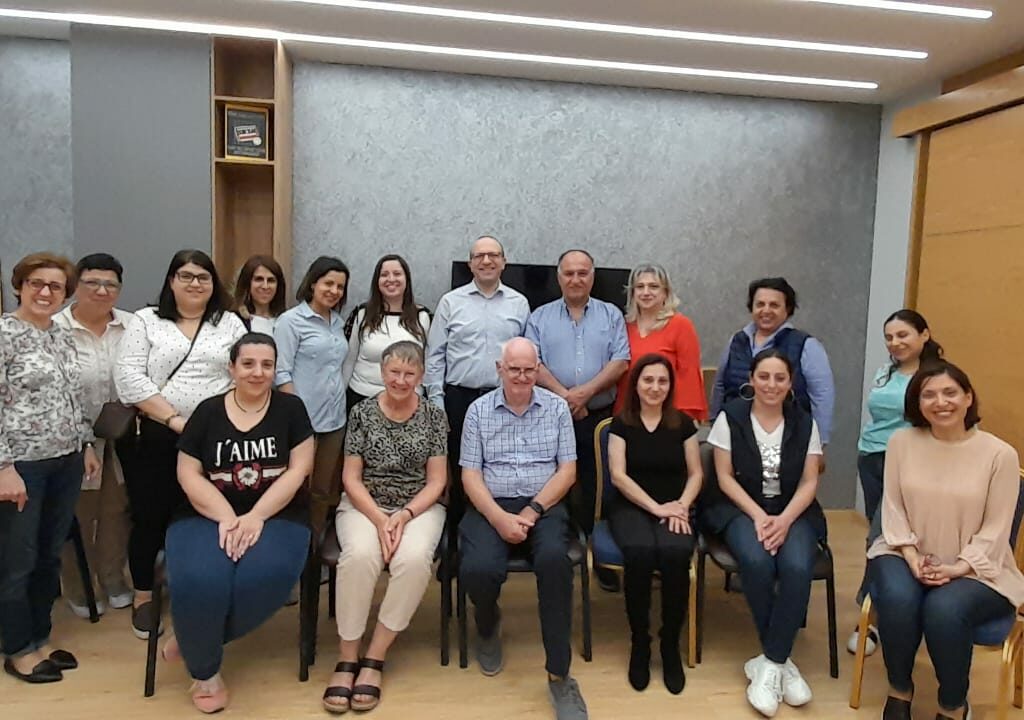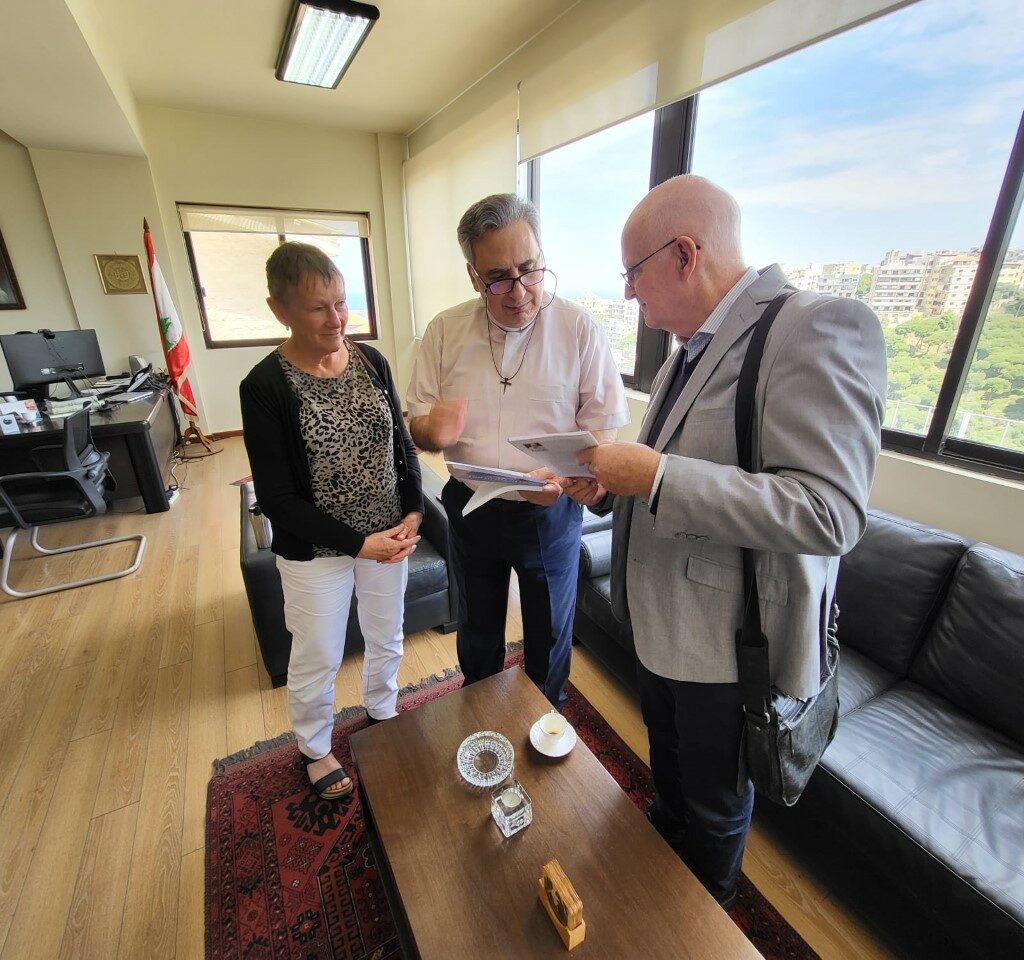It is easy to label Lebanon as “chaotic”: an electricity grid that no longer functions, requiring the use of fuel hungry generators and so necessitating daily scheduled power cuts ; water that is undrinkable; air that is heavily polluted; traffic that is densely snarled up and driving that seems almost entirely without road rules other than that drivers give way to whoever edges their car in front, without which understanding the roads would be totally unmanageable.
Then there are so many windowless buildings and bent metal frames of structures that still bear witness to the vast devastation of the port explosion on 4 August 2020.
There are the vast wads of pound notes that fill one’s wallet in order to pay for a cup of coffee, the inflation rate being 33.5 percent and a consumer price index that has risen 261 percent in the last year. All of this stagnating in the political vacuum of a barely functioning government that meets once a month and where there is stalemate in the appointment of a president.
This is one way of picturing Lebanon. The other is to see it on a more personal scale, to notice how people are going about their daily lives and still managing to live side by side in a society where there are so many potential and real divisions between religious, denominational, cultural and economic groups. It feels, to an observer, as if there are so many tectonic plates that may, for the moment, be holding steady, but where there is always a threat of a rumbling, grating shift that could de-stabilise the hard-won peaceful co-existence.
While there is this underlying unease, morning by morning the shop-keepers are out early, washing down their pavements, sweeping the gutters, even while refugees may be scavenging in the big refuse bins. The cafes open; people stop for their coffee, smile and chat to passers-by. There are the smartly dressed and those whose clothes are tidy but worn. The Mediterranean sparkles blue, even as the air is hazy and catches the throat.
It is in the conversations that a truer sense of the country is found. Framing them all is the deep sense of identity as Christian within all of those we met. This is no easy or casual definition, no half-hearted or merely inherited label. It is core. It treasured and nurtured by the scriptures and by worship. It is a faith that has sustained people through so much violence over decades which has been like a refiner’s fire. The people were described as being vulnerable but not fragile. Another person commented that everyone carries trauma, indeed several traumas. For them, Christ is central.
The small Protestant Evangelical Union reaches out from this to care for the elderly, the sick, the children, the refugees. Their social justice is the outworking of their Christ-centred, biblically nourished faith. Their Christian education is central to building for the future, not an optional extra. There was both humour in conversation as well as weariness and hunger for connection – to feel heard, recognised and supported.

They were not oblivious to changes in the wider world and in particular to the challenges facing young people, who often, after school-age, seek to leave in order to find greater security and economic independence. There is a cost to families in this. There is a mental health cost to the stresses of daily life anyway so an understanding of the choices to be made.

Close to the Syrian border and near a Shiite village and a refugee camp at the edge of the Bekaa Valley there is the village of Anjar, an Armenian Christian settlement. It is a green oasis with flowers and fruit trees. The minister is a young man who, a week before going with his wife to USA to do a Ph D at Fuller Seminary, instead answered a call to serve the church in Anjar. He talked about the school and the boarding house that they set up to meet the needs of children as young as three who needed protection, whatever their religion.
They can stay until they are 18, after which they are still supported. He showed the poly tunnels where they grow not just food to feed the children but to give them an outlet for their energy and distress. They also are beginning to grow lavender to make oil to sell and olive trees from which they will be able to produce oil. All around were roses in flower. He showed us the church which had been restored not long ago, a beautiful place where Christians of all denominations come to worship. He is a young man totally dedicated to his ministry and brimming with ideas to help the community.
We were there on a Thursday. On the following Sunday we heard that there had been a fire at the church and the office. No-one was hurt but the lovely building is blackened and damaged. What or who caused the fire remains unknown. It is just yet another set-back to be overcome and for which to find the energy and money to make right.
To be Christian used to have the strength of being the majority among the Muslim population, itself divided between Sunni and Shiite. Now it is to be the minority and to know that real power resides elsewhere. It is to be vulnerable not fragile. It means to stand firm and hold onto hope. To be hopeful there is a need to be known by others.
This is what felt like the second important thing to have heard on this visit. The first was to see what is to be learned from these different Christian groups we met: the strength that arose from holding Christ in the centre, not set aside somewhat by talk of the Spirit’s empowering work. It was about a kind of discipleship that is often lost sight of in the relative comfort of our Western society, even with our different challenges.
There was laughter and hospitality, cups of coffee always offered and received; meal shared, experiences also. Anxieties acknowledged and humility shown, alongside pride in culture and resilience that has been hard-won.
Lebanon is a beautiful country, battle-scarred and with many areas that bear a recent history as war zones, hillsides where rocket fire shattered small towns and broke lives. There are mountains and forests, villages that perch on steep slopes that have provided shelter from bombings below; borders that have shifted, and walls and fences that define the present moment.
Mary Pearson











